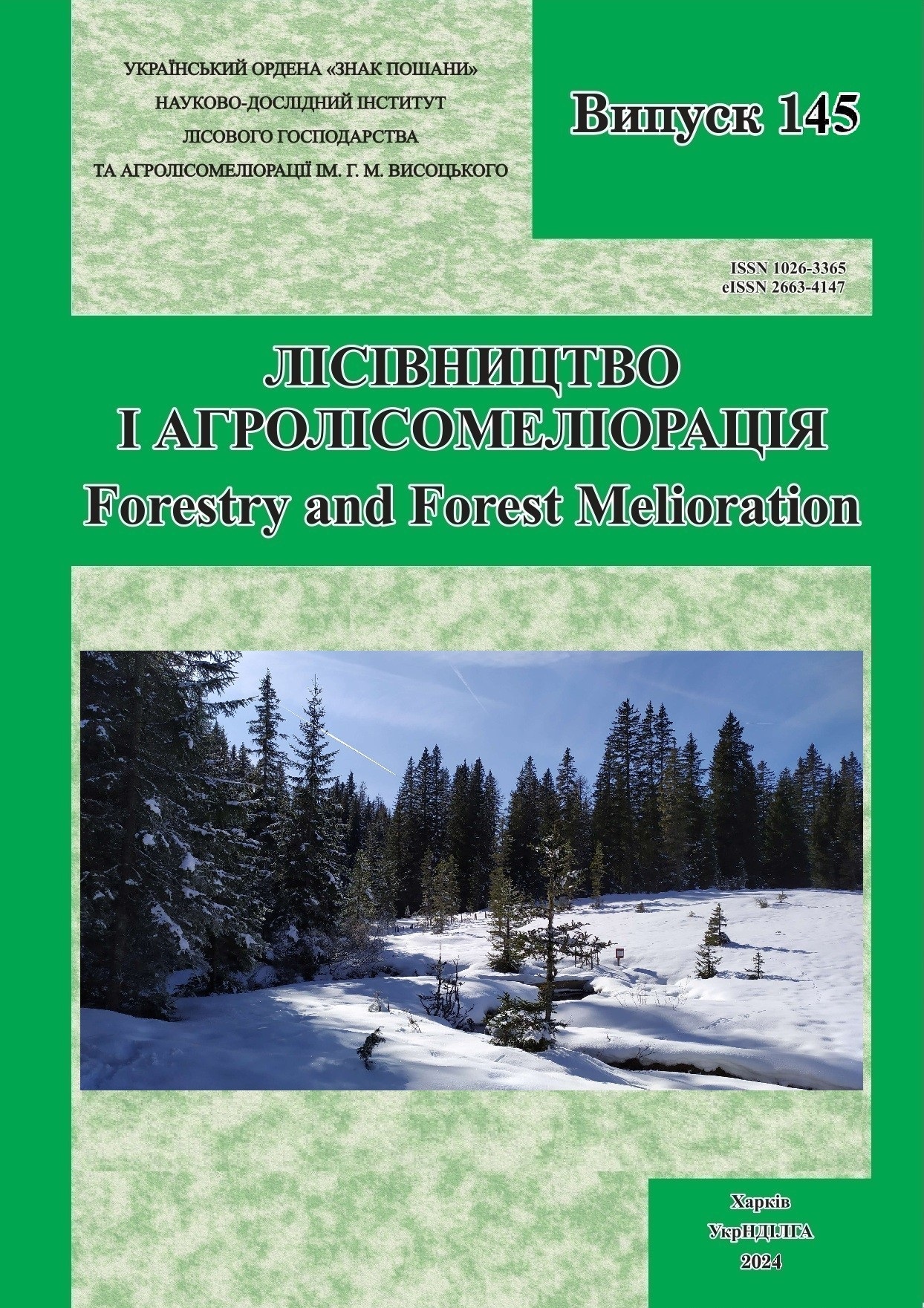Анотація
Наведено інформацію про ураження саджанців катальпи бігнонієвидної (Catalpa bignonioides Walter) борошнисторосяним грибом Erysiphe catalpae Simonyan 1984. Гриб може розвиватися на деревах різного віку, але найбільшої фізіологічної шкоди завдає молодим рослинам. Проаналізовано результати польового експерименту з випробування фунгіцидів Артіс Плюс, Таліус та Вербен для захисту саджанців від ураження борошнистою росою. Усі застосовані препарати не мали негативного впливу на приріст саджанців катальпи та виявили високу ефективність проти збудника борошнистої роси катальпи, що призвело до значного зниження показників, які характеризують поширеність і розвиток хвороби. Найбільшим захисним ефектом навіть за одноразового обробітку відзначається препарат Артіс Плюс. Показник поширення хвороби після оброблення цим препаратом знизився більш ніж удвічі, а показник розвитку хвороби – у 5,6 разу, порівнюючи з контролем. У варіанті дворазового оброблення рослин цим фунгіцидом на саджанцях катальпи збудника борошнистої роси взагалі не виявлено.
Посилання
Boltenkov, Ju.O. and Stovbunenko, D.V. (2008) ‘Fungicides testing for young oak plantations protection from powdery mildew’, Forestry and Forest Melioration, 112, pp. 238–240 (in Ukrainian).
Boyko, A.A. and Puzrina, N.V. (2014) ‘Species Composition of pathogenic planting material of forest nurseries’, Scientific Bulletin of UNFU, 24(10), рр. 34–40 (in Ukrainian).
Braun, U. and Cook, R.T.A. (2012) Taxonomic manual of the Erysiphales (powdery mildews). Utrecht: CBS-KNAW Fungal Biodiversity Centre. ISBN 9789070351892.
Dudin, R.B. (2005) ‘Introduction species in the old parks of Lviv’, Scientific Bulletin of UNFU, 15(1), рр. 34–37 (in Ukrainian).
Golub, S.M. and Golub, V.O. (2021) ‘Features of protection of English oak against Microsphaera alphitoides Gr. et Maubl. in forest plantations’, in Current challenges and current problems of forestry education, science and production. Proceedings of the 1st International Scientific and Practical Internet Conference. Bila Tserkva: BNAU. pp. 58? – 61 (in Ukrainian).
Heluta, V.P. (1989) Fungal flora of Ukraine. Powdery mildew fungus. Kyiv: Naukova Dumka (in Ukrainian).
Heluta, V.P., Dzhagan, V.V. and Senchylo, O.O. (2016) ‘First records of a powdery mildew fungus Sawadaea bicornis (Wallr.) Homma on Acer velutinum Boiss. in Ukraine’, Plant introduction, 1(69), рр. 64–69 (in Ukrainian).
Heluta, V.P., Dzyunenko, O.O., Cook, R.T.A. and Isikov, V.P. (2009) ‘New records of Erysiphe species on Catalpa bignonioides in Ukraine’, Ukrainian Botanical Journal, 66(3), рр. 346–353 (in Ukrainian).
Kuharska, M.O. (2011) Biological and ecological features of species of the genus Catalpa Scop. and their prospective use in the landscaping of Kyiv. Extended abstract of PhD thesis. Kyiv: National University of Life and Environmental Sciences of Ukraine (in Ukrainian).
Kulbickij, V.I. (2006) ‘The evaluation of the introduction success of Catalpa in the conditions of culture of right-bank forest-steppe of Ukraine’, Scientific Bulletin of UNFU, 16(3), рр. 21–25 (in Ukrainian).
Kuleshov, A.V. and Bilyk, M.O. (2014) Рractice on forecasting the development of diseases of agricultural crops. Kharkiv: V.V. Dokuchaiev Kharkiv National Agrarian University (in Ukrainian).
Lavitska, Z.G. (1955) ‘New finds of powdery mildew fungi (Erysiphaceae) for the Right Bank Forest Steppe’, Scientific notes of Kyiv University, 13(16), pp. 67–77 (in Ukrainian).
Naidenko, M.M. and Vlasenko, V.А. (2018) ‘Monitoring of powdery mildew on young oak cultures and the effectiveness of fungicide application from agent affect under the conditions of Forest Steppe of Ukraine’, Bulletin of Sumy National Agrarian University. Series: Agronomy and Biology, 35(3), рр. 3–7 (in Ukrainian).
Pap, P., Rankovich, B. and Masirevich, S. (2012) ‘Significance and need of powdery mildew control (Microsphaera alphitoides Griff. et Maubl.) in the process of regeneration of the pedunculate oak (Quercus robur L.) stands in the Ravni Srem area’, Periodicum Biologorum, 114(1), рр. 91–102.
Rosenfeld V.V. (2015) ‘Technological means of control of powdery mildew of oak (Microsphaera alphitoides Qriff et Maubl.) and algorithm of their implementation’, Forestry and Landscape Gardening, 6, рр. 77–82 (in Ukrainian).
Romakin, V.V. (2006) Computer data analysis: Tutorial. Mykolaiv: Petro Mohyla Mykolaiv State Humanitarian University (in Ukrainian).

Ця робота ліцензується відповідно до Creative Commons Attribution 4.0 International License.

